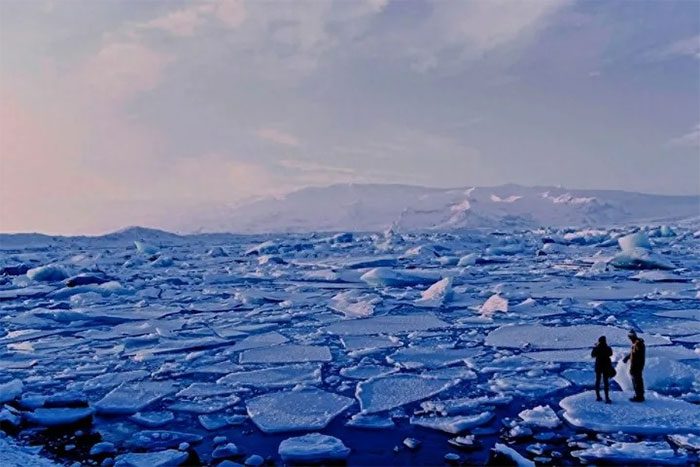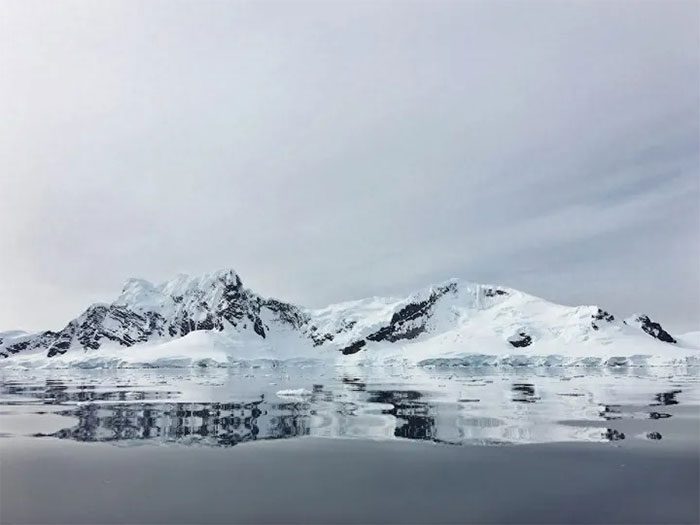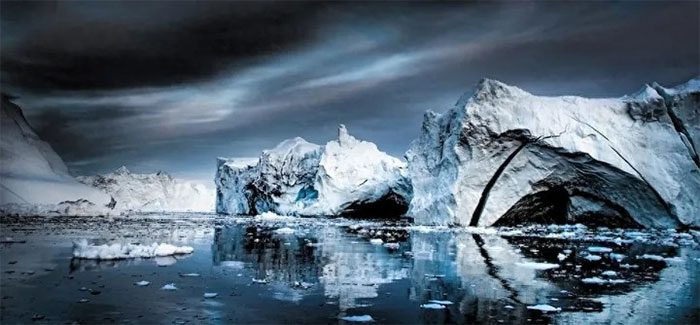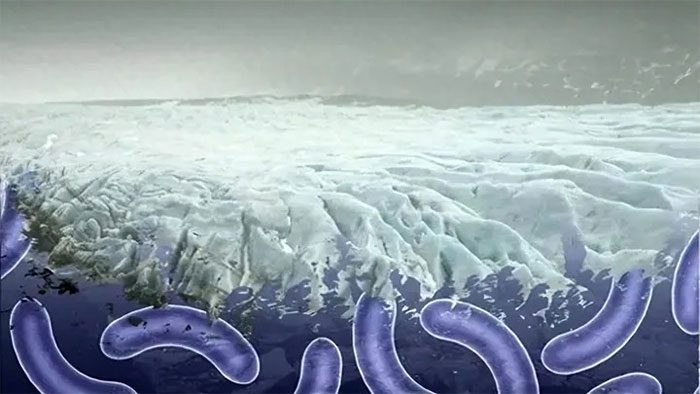Over the past few decades, climate change has become an undeniable global issue. Rising temperatures, changing precipitation patterns, and other climate phenomena can have far-reaching consequences for the biological world.
In the frigid and icy regions, a dangerous mystery is alarming scientists. As global warming intensifies, this mystery is gradually revealing unprecedented threats. Current research indicates that climate change has accelerated the melting of ice at both poles, leading to the risk of awakening and spreading ancient viruses that have been dormant beneath the ice.
These dormant viruses are often trapped in mountainous and glacial regions, but as global temperatures rise, they could be released into our fragile ecosystem. This is an extremely frightening reality we are about to face, posing not only a threat to human health but also potentially having a significant impact on the biodiversity of the entire Earth.

Climate change has become one of the hot topics worldwide. (Image: Zhihu).
Whether climate change affects the activation and spread of dormant viruses is a hot topic in the scientific community. Many scientists are researching the impact of climate change on viruses and trying to find possible connections.
Recent studies have shown that climate change may promote the activation and spread of certain dormant viruses, but many questions remain unanswered regarding this issue.
First, we must understand what dormant viruses are. Dormant viruses are those trapped under ice or hidden within a host organism and can exist for long periods without showing symptoms. This means that hosts may remain unaware of the virus’s presence until certain conditions activate its activity. These conditions may include a weakened immune system, changes in the environment, etc.

In addition to the direct impact on Earth’s ecosystems and global temperatures, climate change can also lead to a series of indirect effects, one of which is the spread of viruses in polar regions. (Image: Zhihu)
Over the past few decades, climate change has become an undeniable global issue. Rising temperatures, changing precipitation patterns, and other climate phenomena can have far-reaching consequences for the biological world. Some studies show that a warmer environment may promote the reproduction and spread of viruses. For example, rising temperatures can weaken a host’s immune system, potentially allowing dormant viruses to become active and cause disease. Additionally, higher temperatures and humidity can create a more favorable breeding environment for many disease-carrying organisms, such as mosquitoes, thereby increasing the chances of virus transmission.
Research on the relationship between climate change and dormant viruses is still in its early stages, and the conclusions drawn so far are not sufficient to establish a clear causal relationship.
Besides climate change, researchers are also considering other factors that may affect the activation and spread of dormant viruses, such as population migration and increased globalization. These factors may alter the ways humans interact with pathogens and create additional opportunities for virus spread.

These dormant viruses were originally buried deep in the ice, but with the rapid melting of glaciers, they could be released into the environment, threatening human health and survival. (Image: Zhihu).
Warm climate conditions may accelerate the spread of viruses
- First, high temperatures create favorable conditions for bacteria and viruses to develop and reproduce, especially in water bodies. Many types of viruses take advantage of warm climates and water bodies to extend their survival range, thus increasing their spread.
- Second, high temperatures can accelerate changes in host ecosystems, making species more susceptible to viral infections as they seek new habitats and food sources. Therefore, rising temperatures could increase the risk of virus transmission in polar regions.
As the climate warms, ice in polar regions melts faster, leading to a series of significant impacts.
- First, melting ice allows viruses trapped in the ice to be released back into the environment. Research shows that there is a large number of biological viruses hiding in the permafrost in polar regions, which have been dormant during the long ice age, but when released into the environment, they could cause new diseases.
- Second, melting ice also accelerates the exchange of matter between the ocean and land, which may gradually lead to the spread of viruses to terrestrial animals and humans through the food chain.

International cooperation may be key to preventing the spread of potential viruses. As climate change is a global issue, it requires joint efforts and collaboration on a global scale to effectively address this problem. (Image: Zhihu).
Climate change has altered the dynamic balance of ecosystems in polar regions, thereby facilitating the spread of viruses. Polar ecosystems are highly sensitive, and any external disruption can break the balance between species. Changes in ecosystems due to climate change can increase or decrease the populations of certain species, affecting their interactions with viruses. For example, rising ocean temperatures may lead to increased populations of certain marine animals, creating more opportunities for the spread of marine viruses. These changes will exacerbate the risk of virus transmission.


















































